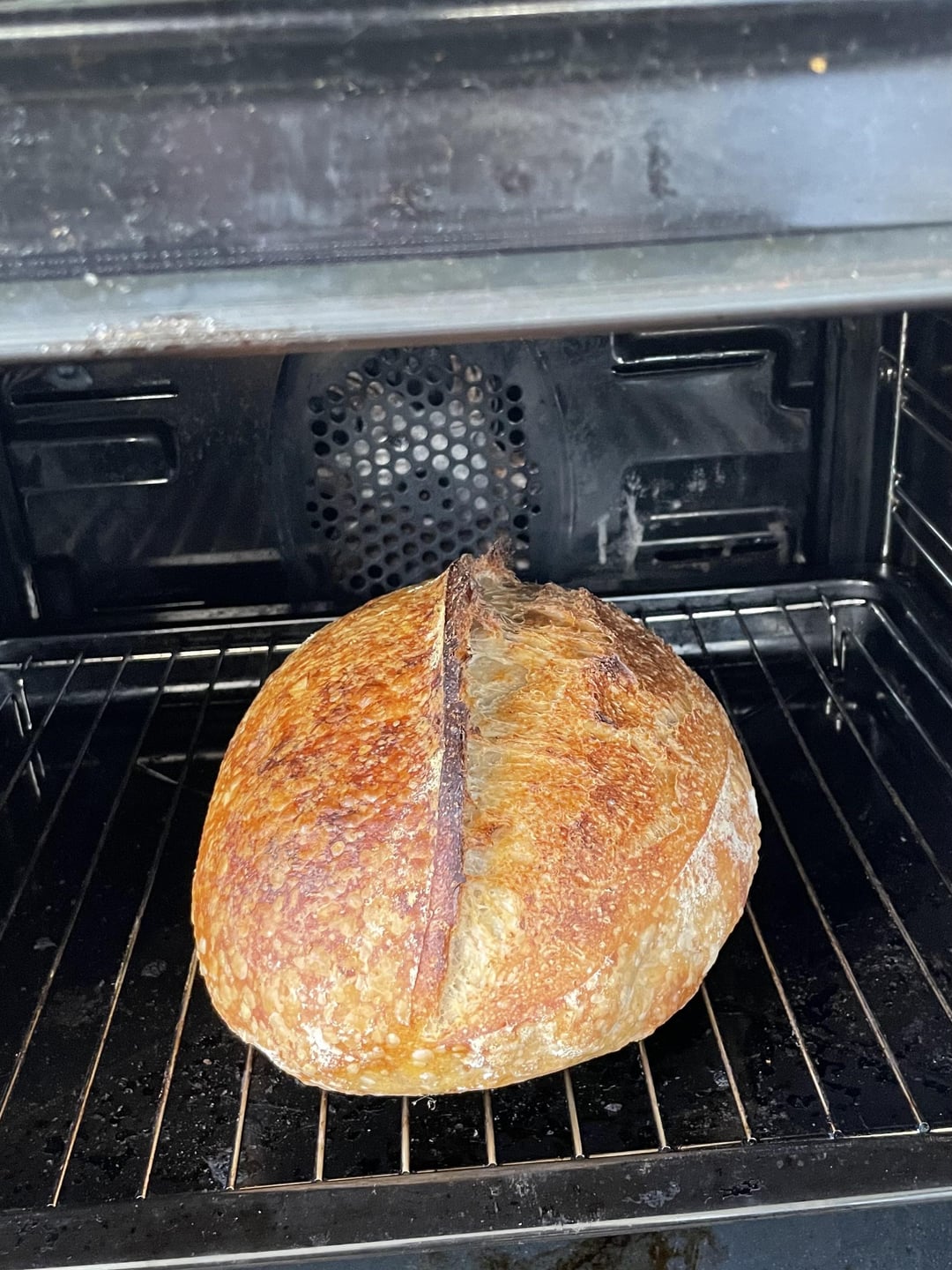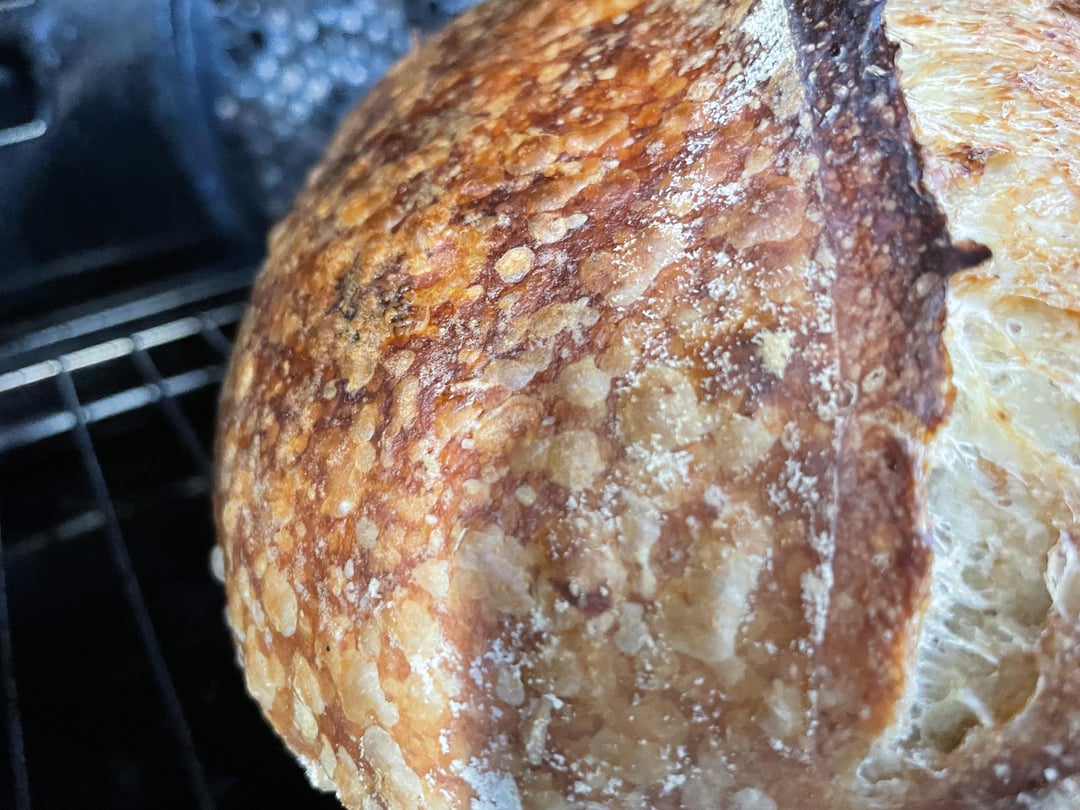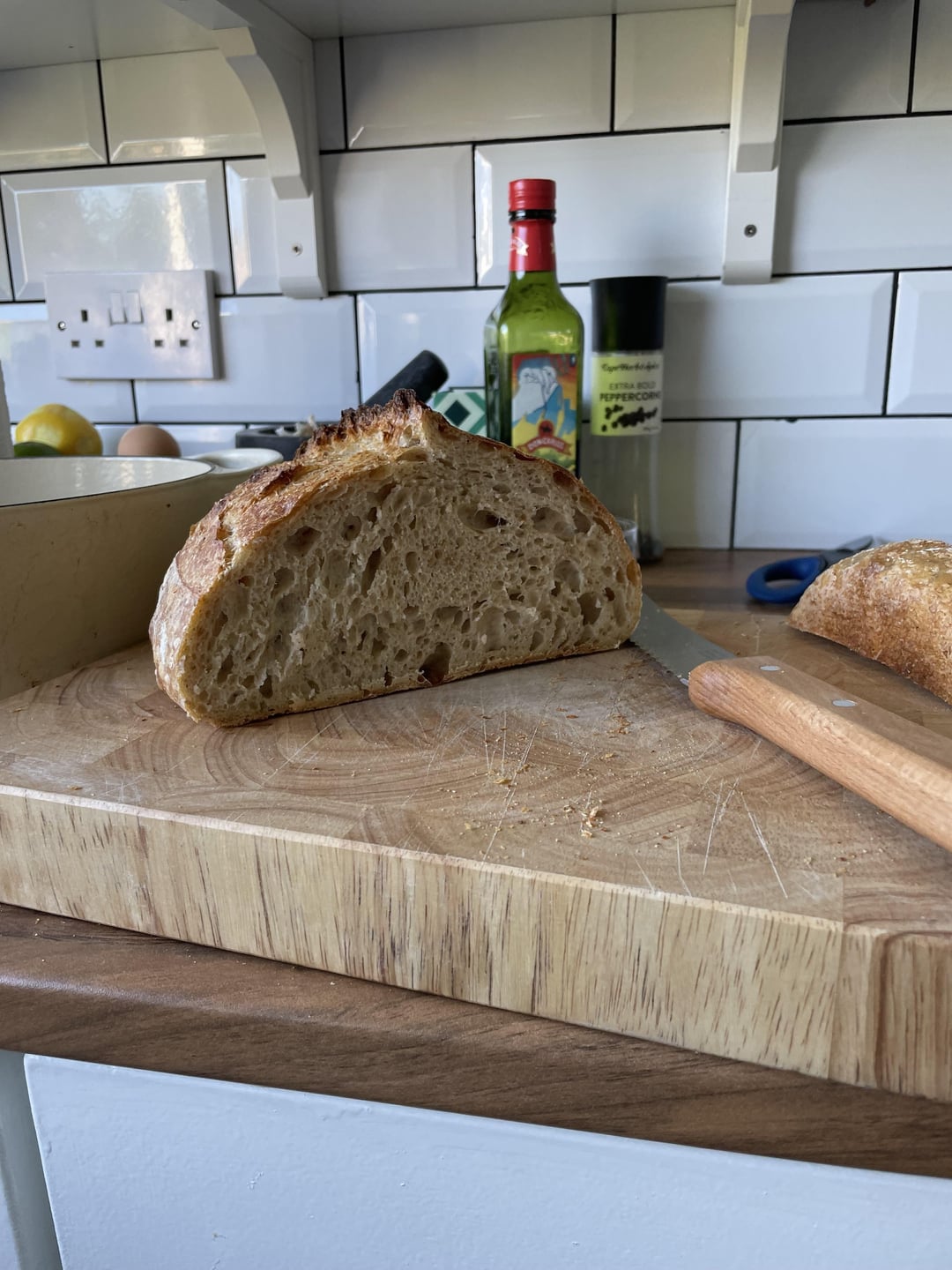


Haven’t had the opportunity to bake in over three years but am back on track! Most of the method/ recipe is from memory but pretty much where I left off. What can I do to improve oven spring and ope up crumb?
Recipe
30 flour whole meal
470 white
388g water 77%
10g salt 2%
95g starter 19%
Steps
Mix water flour rest 30min
Mix the starter and salt rest 30min 0930
Bench stretch (not sure if correct name… the thing where you stretch it into a large rectangle then fold it up) then 40min (1000)
Coil fold rest 1040
Coil fold 1140
Coil fold 1215
Coil fold 1338
Bulk 3 hours
Preshape 1630
Shape 1700
Fridge overnight
Preheat oven/dutch oven 1hr at 240c
Bake lid on 25min lid off 25min
by slipperysalmonmousse


5 Comments
Wow splendid job! The crumb looks amazing and personally I wouldn’t change it, but maybe try scaling up the water to the 80s if your flour can take it?
Otherwise, try out different shaping methods and maybe skip the preshape unless your dough is very slack – as to deflate it as little as possible. And if you’d like, introduce even more steam by spritzing the dough with water before adding to the DO.
Looks like you haven’t forgotten
Still got it
Also, it’s called a lamination or laminating fold
Hi. Nice work . You have not lost your touch. That is a very nice-looking loaf. Well done.
To me, the crumb is a little uneven and showing sig so that the gluten is beginning to weaken with thinning membrane structure and some holes. iMO, this indicates slightly over fermented and underdeveloped. Your stretching and folding may be a little rusty.
Kneading vs stretch and fold:
Kneading is a ‘power’ stretch and fold, rapidly and repeatedly. I only use such vigorous handling in the mixing phase to adequately achieve a homogenous dough. Thereafter, I adopt stretch and fold techniques much slower and more gentle. These methods allow the dough to do the work you simply direct it. When the dough has had enough, it will tell you. It will stop stretching. At that point, further forceful stretching will only tear the dough. Rest it. For a minimum of a 1/2 hour. In repeat stretches, the point of resist will come earlier until the point where extensibility occurs. At this stage, your dough will hold shape without tearing and without elastic rebound. It is even more important to handle dough with high levels of whole wheat or or rye with extreme tenderness to prevent gluten tears and gas loss.
After a suitable rest period to finish out bulk fermentation. Around 50 % rise I curtail gluten development and go straight to shape, place in banetton (in my case into baking tin), and commence cold retard after a short 1/2 hour rest
Feeling and seeing the dough change and respond is, for me, a large part of the process.
Happy baking
Wow that crust looks incredible! Is your oven gas or electric?